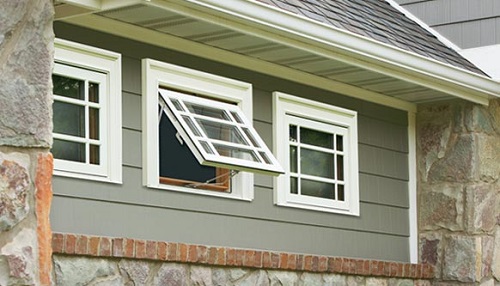Fresh air
The term ‘fresh air’ is commonly used to refer to air that is outside (or from outside) a building or enclosed space, as opposed to that which is inside. In order to ensure a good supply of fresh air, buildings need to be properly ventilated. Sometimes air that is not fresh is referred to as 'stale air'.
The provision of fresh air in a building is important to occupants’ wellbeing and has several benefits, including:
- Increasing oxygen availability and removing carbon dioxide.
- Maintaining a comfortable temperature.
- Enabling optimum brain functioning, increasing energy levels and improving concentration.
- Diluting and removing odours.
- Helping to moderate internal humidity.
- Reducing the accumulation of moisture, bacteria, dust, smoke and other contaminants.
Insufficient fresh air can result in occupants feeling tired, experiencing headaches, irritated eyes, and so on.
The Workplace (Health, Safety and Welfare) Regulations 1992 require that an employer does what is needed to make sure that every enclosed workplace is ventilated by a sufficient quantity of fresh or purified air. It states that the fresh air supply rate should not normally fall below 5-8 litres per second, per occupant. The appropriate rate should be decided by several factors, such as the amount of floor space per occupant, the work activity, possible sources of airborne hazards, and so on.
For more information see: Ventilation.
[edit] Related articles on Designing Buildings
- Air.
- Air conditioning.
- Air quality.
- Air Quality Taskforce.
- At a glance - Indoor air quality.
- Bringing a breath of fresh air to the design of indoor environments.
- Building related illness.
- Clean indoor air for healthy living - New air filter standards.
- Human comfort in buildings.
- Indoor air quality.
- Sick building syndrome.
- Re-circulation air.
- Stale air.
- Thermal comfort.
- Ventilation.
Featured articles and news
How can digital twins boost profitability within construction?
A brief description of a smart construction dashboard, collecting as-built data, as a s site changes forming an accurate digital twin.
Unlocking surplus public defence land and more to speed up the delivery of housing.
The Planning and Infrastructure bill oulined
With reactions from IHBC and others on its potential impacts.
Farnborough College Unveils its Half-house for Sustainable Construction Training.
Spring Statement 2025 with reactions from industry
Confirming previously announced funding, and welfare changes amid adjusted growth forecast.
Scottish Government responds to Grenfell report
As fund for unsafe cladding assessments is launched.
CLC and BSR process map for HRB approvals
One of the initial outputs of their weekly BSR meetings.
Architects Academy at an insulation manufacturing facility
Programme of technical engagement for aspiring designers.
Building Safety Levy technical consultation response
Details of the planned levy now due in 2026.
Great British Energy install solar on school and NHS sites
200 schools and 200 NHS sites to get solar systems, as first project of the newly formed government initiative.
600 million for 60,000 more skilled construction workers
Announced by Treasury ahead of the Spring Statement.
The restoration of the novelist’s birthplace in Eastwood.
Life Critical Fire Safety External Wall System LCFS EWS
Breaking down what is meant by this now often used term.
PAC report on the Remediation of Dangerous Cladding
Recommendations on workforce, transparency, support, insurance, funding, fraud and mismanagement.
New towns, expanded settlements and housing delivery
Modular inquiry asks if new towns and expanded settlements are an effective means of delivering housing.
Building Engineering Business Survey Q1 2025
Survey shows growth remains flat as skill shortages and volatile pricing persist.























